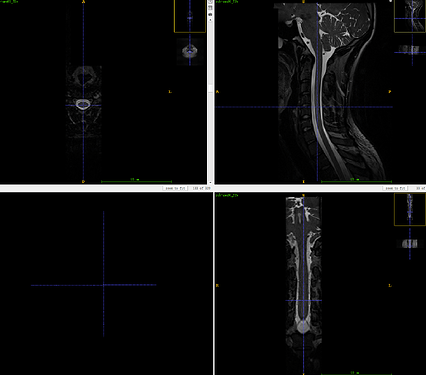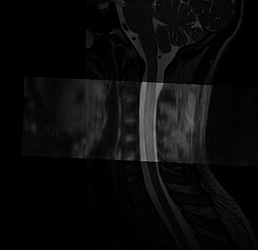Dear SCT team:
Hello, I try to register the direction of 3D t2 and 2D t2s without change of resolution. The 3D t2 image is Isotropic. I want to make 3D t2 images have same FOV and direction of 2D t2s. But the results of commands like ‘sct_register_multimoda’ have been through interpolation.I really hope to get your suggestions. Thank you for your time!
Best wishes
Janessa
Hi @Janessa,
If you wish to copy the orientation of im_src to im_dest, you can do this:
# Get the orientation of im_dest
sct_image -i im_dest -getorient
# it will output the orientation, for example "RPI"
# Set the orientation of im_src
sct_image -i im_src -setorient <OUTPUT OF PREVIOUS COMMAND>
And if you want a single-line command you can also pipe it:
sct_image -i im_src -setorient "$(sct_image -i im_dest -getorient | tail -n 1)" -o im_src_orient
Cheers,
Julien
Thank you very much! I will try this.
Sorry, I think I didn’t describe my problem clearly. I have the 3D T2w image and 2D T2star image from the same patient. The orientation of images is both RPI, but there is an angular deviation between the axes. I wonder if I can get 3D T2w images that have the same axes as 2D T2star images using SCT.
T2w:
T2star:
The 3D T2w image and 2D T2star image is shown in this figure.The T2star image is shown on the top of T2w image. ITK-SNAP makes some interpolation on the T2star image for display.
Hope to get your suggestions. Thank you again for your time!
Best,
Janessa
If you are trying to register the T2w image to the T2w image (and by “register”, I mean estimate a transformation that aligns the spinal cord between the two contrasts), and then represent the registered T2w image in the space of the T2w image (and by “represent”, I mean that each voxel in the T2*w space will have its correspondance in the registered T2w image), then interpolation is a requirement. There is no way around it.
Now, there are various ways to perform interpolation (nearest neighbour, trilinear, sinc), so depending on what you are trying to achieve with your analysis, you can choose the most appropriate interpolation method.
Cheers,
Julien


